Art Fairs
The Debut of Eye of the Collector, London’s Latest Boutique Fair, Offers Positive Early Signals for the Returning Art Market
Dealers reported collector enthusiasm for the fair's cross-category approach and genteel setting.
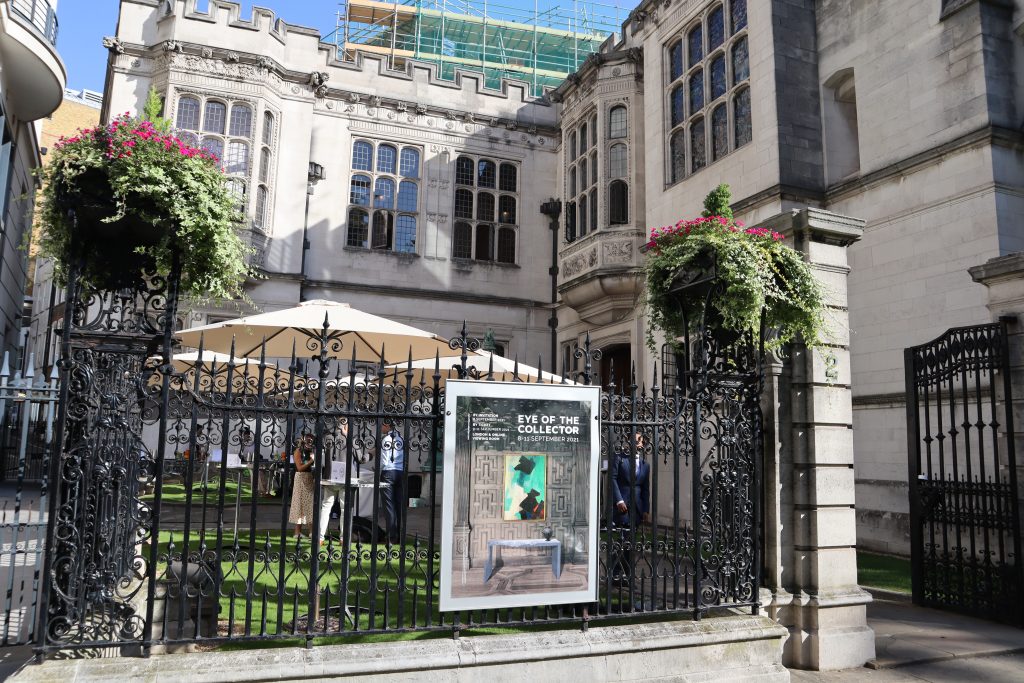
Dealers reported collector enthusiasm for the fair's cross-category approach and genteel setting.

Naomi Rea

The U.K.’s fall art-fair season came rumbling back to life yesterday with the opening of Photo London (September 8–12) at Somerset House in central London. But some of the city’s well-heeled collectors were spending their money at a new boutique fair in a historic property just around the corner.
The new entrant, Eye of the Collector, is the brainchild of auction-house veteran and former Masterpiece CEO Nazy Vassegh, who hopes to offer a new species of fair that breaks down habitual art-world barriers, from dividers separating gallery booths to reductive collecting categories that don’t reflect buyers’ wider collecting habits.
Inspired by the encyclopedic collections on view in ornate Venetian palazzos and informed by a 30-year career in the art world—including 19 years at Sotheby’s and heading up her own advisory—Vassegh told Artnet News that, in her experience, “a client doesn’t just collect one kind of artwork.” Some 6,000 years of art history, from ancient sculpture to to modern art and contemporary design, are presented side by side at the fair, which opened in a Gothic Revival mansion at Two Temple Place yesterday and runs through September 11.
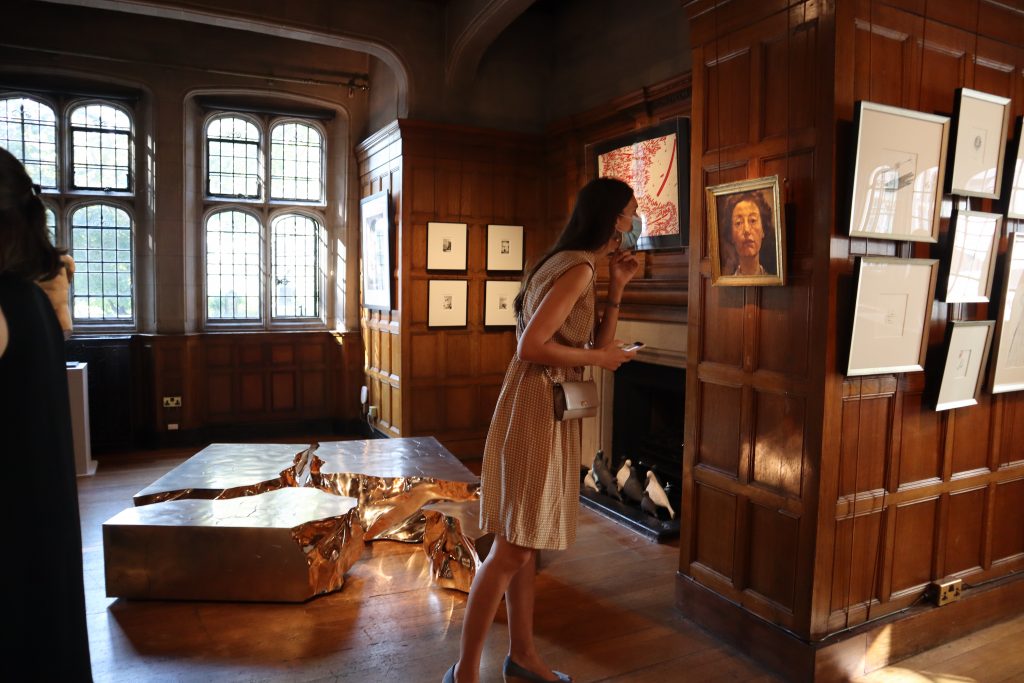
Eye of the Collector. Photo by Naomi Rea.
“Everything you see here is for sale,” Vassegh said as we swanned past a pair of handsome mid-century Brockmann-Petersen chairs, contemporary art by the young Brazilian painter Gustavo Nazareno, and a 1st-century A.D. Bacchus torso. Thirty galleries are taking part in the fair, with works priced from £1,000 into seven figures.
The fair was forced to cancel its inaugural edition last year and pivot to an online event last May. Fifteen percent of works on offer sold, which Vassegh said was a “good result” relative to comparable platforms. In this second pandemic year, the participating galleries were mostly drawn from the U.K., but there were some international dealers, including Tornabuoni Art and the Indianapolis-based Long-Sharp Gallery.
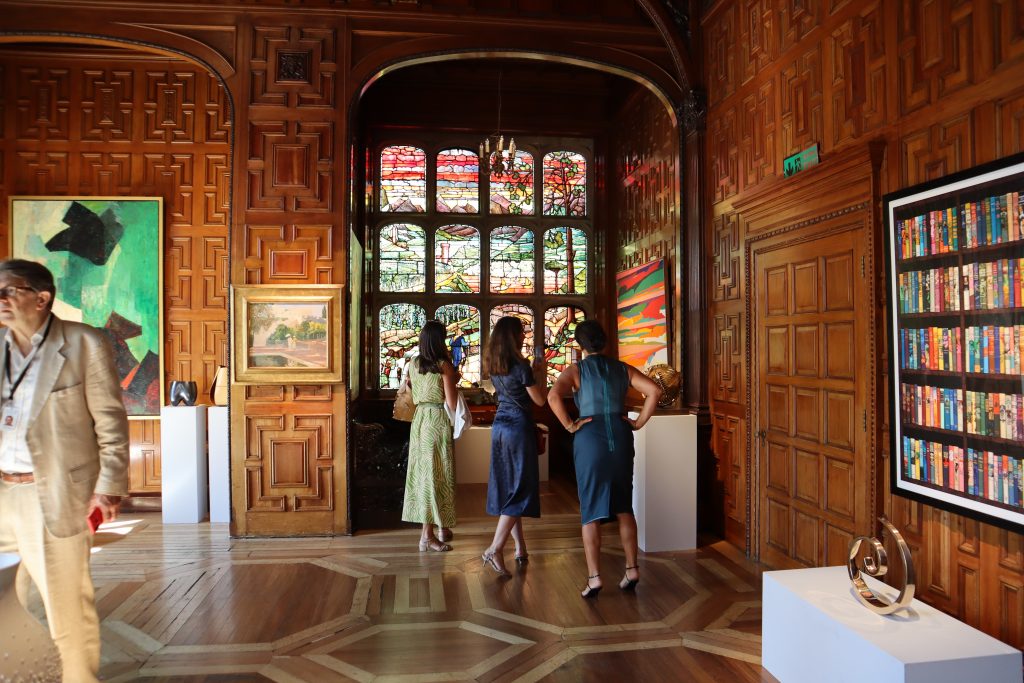
Eye of the Collector. Photo by Naomi Rea.
For both, the gamble on London was beginning to pay off. By the end of day one, Long-Sharp reported that it had sold a Patrick Hurst sculpture, a work by Spiller + Cameron, and Andy Warhol’s 1984 photograph of Keith Haring and Terry Toy. Meanwhile, Tornabuoni director Ursula Casamonti was reveling in the opportunity to give collectors a preview of some of the works she will also be bringing to Frieze Masters in October, which include work by later Italian avant-garde masters, including a €3 million Lucio Fontana slash work and an Arnaldo Pomodoro globe priced at €290,000.
“I’ve been doing art fairs for years, and this is a really well-done boutique art fair,” Casamonti said. “It couldn’t be better, the location, the combination of artworks, and it is attracting very good collectors.” We were soon interrupted by a collector inquiring about a Piero Dorazio painting, priced at €230,000, that was dialoguing with the historic building’s Clayton Bell–designed stained-glass windows.
Advisors and collectors said the fair felt like a special event since it forged ahead while other small fairs have hedged their bets; art and design fair and Frieze satellite PAD London pulled the plug last month, Paris art fair Salon Galeristes canceled its October edition, and the New York International Antiquarian Book Fair and Portal, the Governors’ Island Art Fair, both scrapped their 2021 events.
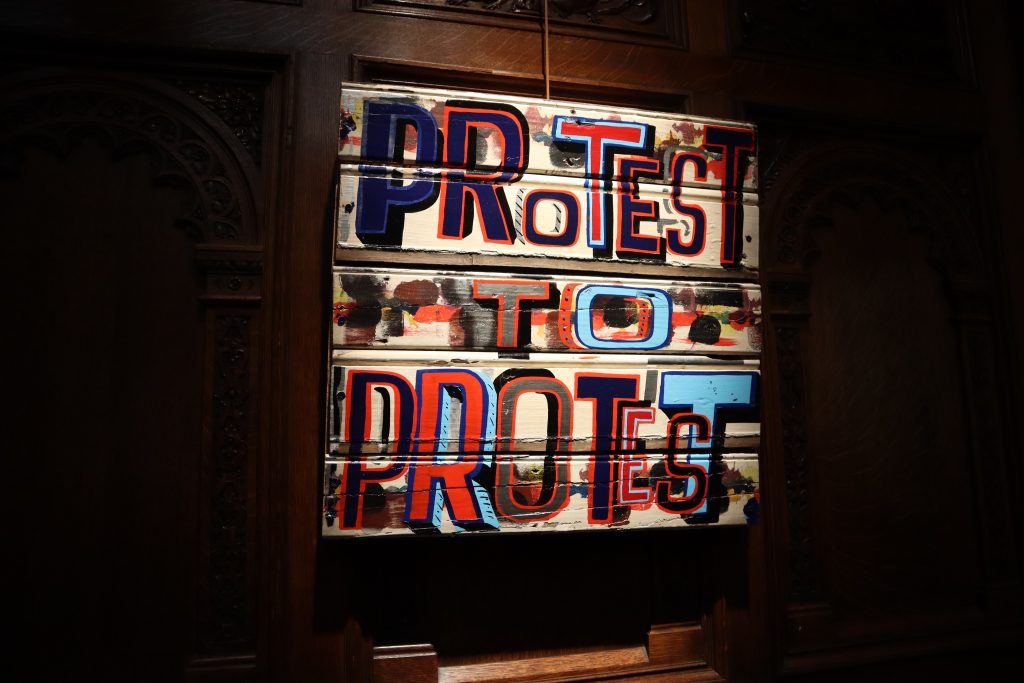
Eye of the Collector. Photo by Naomi Rea.
One of the fair’s distinguishing elements was the absence of booths. Dealers’ confusion around where exactly to stand resulted in them striking up conversations with a wider cross-section of collectors—sometimes even about items that they were not there to sell. “One thing we’ve all learned in this pandemic is we’re all stronger as a team and better when we collaborate,” Vassegh said. (The fair has also partnered with Christie’s Online to advertise works, with inquiries routed directly to the fair).
George Lionel Barker, of Gazelli Art House, was initially wary of the lack of booths, as well as slow-to-arrive wall labels with QR codes: “It’s unclear whose is what.” Still, he said, he was up for the experiment. Attendance was a lower-stakes gamble for the London-based gallery than some of the other fairs it took part in this year: attending Art Dubai in March netted new clients and a sold-out booth, but international shipping set them back some £40,000, and quarantine restrictions on both sides meant his colleague was out of the gallery for a month. Participating in the local fair was “about a quarter” of the cost, he said.
Barker was showing, among other things, a work by Perle Fine, an overlooked figure in the New York Abstract Expressionist movement, priced at £70,000. He predicted sales to fall in line with the naturally slower pace of sales at cross-category events. Toward the end of the day, he reported that he sold a work by Bob and Roberta Smith for £10,000 to a local collector.
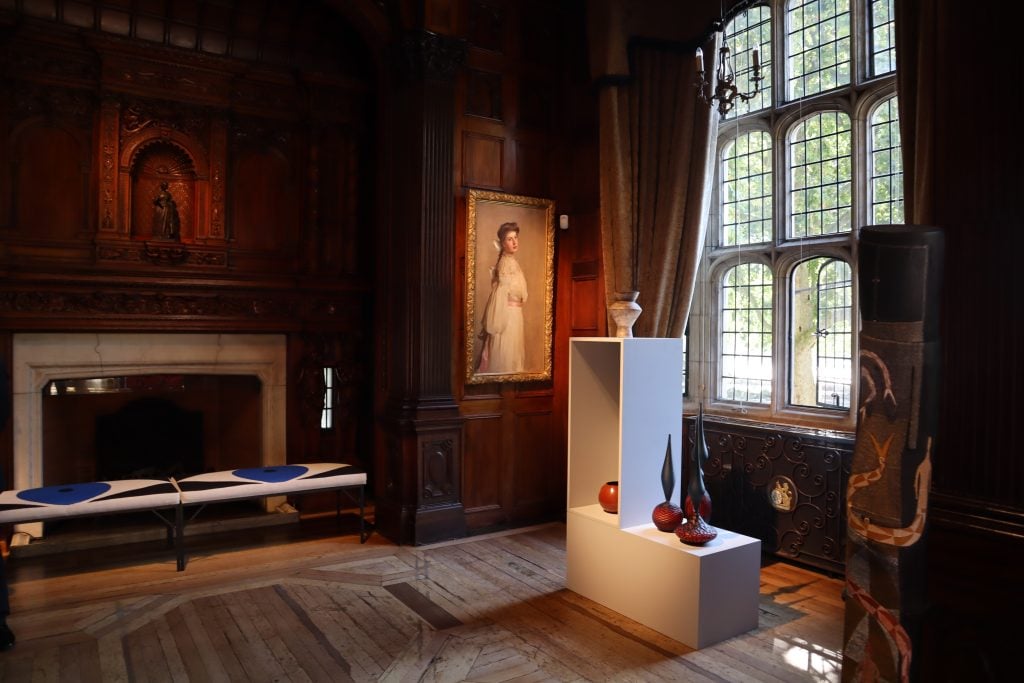
Eye of the Collector. Photo by Naomi Rea.
Asked whether she expected collectors would return en masse to in-person events this season, Vassegh was unsure. “It will be the first test of the market,” she said. “I am getting the sense that people are excited to attend real-life events and see something new and fresh that is boutique in scale, and not in a tent or conference center.” She added that she hoped the setting, with high ceilings and strictly timed entries, would mean that people felt comfortable, and that there was a concurrent online viewing room for those who were still hesitant to return to in-person events.
By the end of the day, the fair had welcomed some 840 visitors through the door, including a number of notable collectors—among them Muriel Salem, Valeria Napoleone, Maryam Eisler, Maria Sukkar, Alison Myners, Roland Cowan, and Sigrid Kirk—and art advisors. Some of the first sales were two works by emerging artist Alfie Caine, selected by the fair’s curatorial committee. Early on, Vigo Gallery sold a work by Spiller + Cameron, Katie Jones gallery sold metal works by Koichi Io, and Charles Ede sold a Persian sword blade.
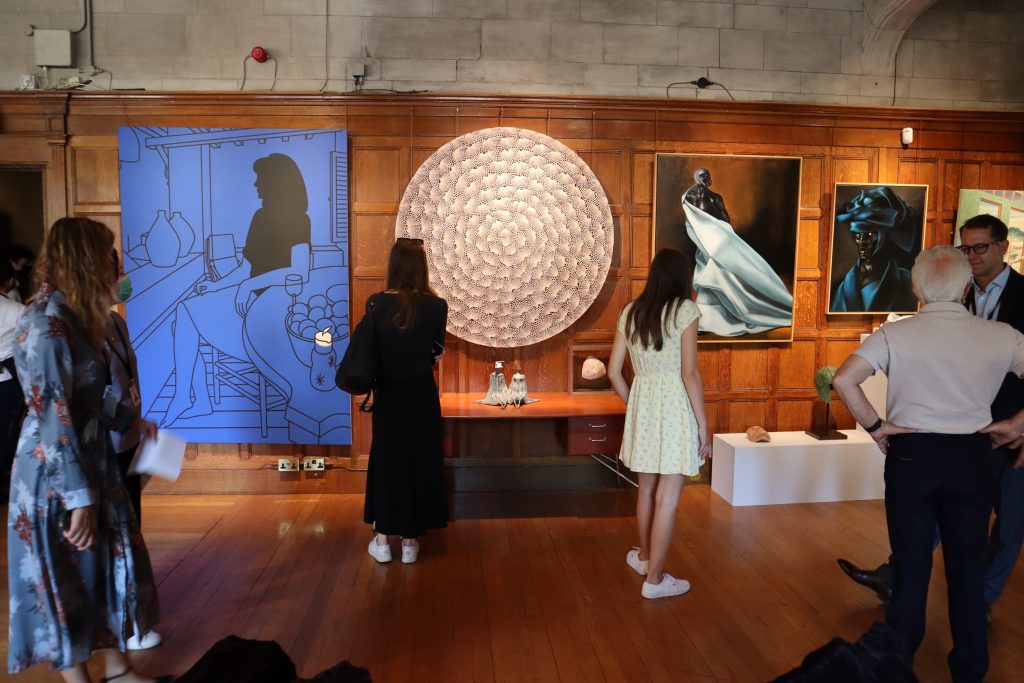
Eye of the Collector. Photo by Naomi Rea.
And the wider response from dealers was largely optimistic. Peter Ting, cofounder of Ting-Ying, said there was a “fantastic turnout and great-quality clients,” and reported interest in the gallery’s ceramics, particularly delicate sculptures by Su Xianzhong. Polly Bielecka, director of Pangolin London—which was showing a dress made from deer antlers by Susie MacMurray, priced at £75,000—said that although she had taken part in online events, she found the in-person experience is necessary to move work in higher price brackets. By the end of the second day, she had closed a sale on a sculpted white marble table by Zachary Eastwood-Bloom.
Between fielding inquiries from collectors and advisors on a £250,000 Domenico Gnoli, Cordelia Bourne, from Patrick Bourne & Co., agreed that the fair was off to a positive start. “People are enjoying the experience and are feeling visually stimulated rather than fatigued by it,” she said, “which is pleasing to hear.”
Eye of the Collector is on view through September 11 at Two Temple Place, London.